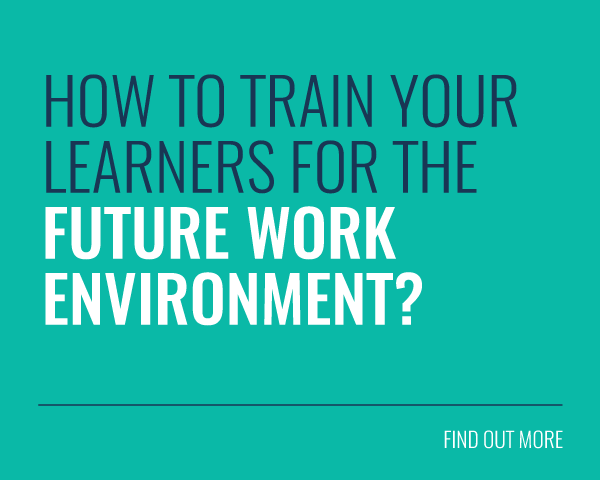
If training doesn’t impact your business, then you’ve got to ask yourself if there’s any point.
It’s like having Woody without Buzz Lightyear: Toy Story would be okay, but the adventures would have less impact.
Your organisation’s Learning and Development department doesn’t exist simply because senior management felt like spending a bit more money!
They have a goal in mind – they want the training to impact the business in a meaningful way.
This is why microlearning is so valuable, it can help you deliver training with maximum business impact! Yet, like any training tool, there are challenges involved in proving its business impact.
Before we dissect that, let’s clarify what we mean by business impact…
What is Business Impact?
Business impact refers to the outcomes of your training that have real value for your organisation.
It’s not about looking at logins or course completions, but about digging a little deeper. What tangible changes are made to your business because of the increased proficiency of your learners?
When you’re communicating the business impact of your microlearning, executives don’t care for every impact under the sun, regardless of how impressive they might be.
It probably won’t surprise you to find out that senior leadership tend to care about one thing: money. This means they want to see that your microlearning leads to:
- Increased revenue
- Reduced costs
- Increased efficiency
- Reduced risks
Once you’ve launched a microlearning campaign, it’ll have a knock-on effect on everything else. Like dominoes lined in a row, the knock-on effect of your microlearning can trigger a chain reaction. It might look a bit like this:
- Microlearning leads to increased engagement. In fact, 50% of employees say they would use their companies learning tools more if the courses were shorter
- This means that learners keep returning to consume more content
- This reinforces their knowledge, facilitating behaviour change
- The change in behaviour directly impacts your business goals
So that’s what business impact is. Now we get to the hard bit: communication!
The Challenges of Proving the Business Impact of Microlearning
Although microlearning is no longer a new concept, some people still can’t get their head around the idea of bite-sized learning. This can lead to all sorts of challenges when trying to communicate its effectiveness.
Just because it’s small, doesn’t mean it’s not mighty! Let’s take a look at the challenges involved when trying to prove the business impact of microlearning:
Pre-Planning the Measures of Training

Some think that installing a new training programme is a simple, breezy process. Simply create your training campaign and release it to thunderous applause and a tidal wave of completions. Once it’s finished, you can run a few reports and spin some excel wizardry. All of a sudden, you have enough stats to prove the success of your training!
Yet, a tonne of stats doesn’t help you achieve anything except the befuddlement of everyone who reads your report (of course… that might be your goal!).
Proving the business impact of your microlearning campaign involves a mighty heap of pre-planning in order to demonstrate the relationship between your training and the metrics that matter.
With microlearning, you can’t rock up and start measuring metrics halfway through the module. You need to put all the necessary measures in place before you even release the training!
One sure-fire way to prove that your training has impacted your business is to use a control group. For example, you have two sales teams, Group A and Group B. Group A is undertaking your sales enablement training and Group B is your control group.
You’d need to measure the aptitude of both groups before you start, then deliver the training to Group A and not Group B. Once the training is complete, you can directly compare any change in sales performance between the two groups.
With this information, you can prove the impact your training has had. But it’s near-impossible to create story this powerful without thorough planning.
L&D is Seen as a Cost Centre
One of the biggest issues faced by L&D is overcoming the popular misconception shared by executives all over, namely, that L&D is a never-ending cost centre.
Of course, this is deeply untrue. The truth is that your training provides enormous value!
Yet, this attitude has been around for years. It can be very hard to change long-held opinions, but if you’re going to change attitudes you need to arm yourself with some indisputable proof!
Presenting Business Impact as a Story

With 94% of experts saying learners prefer bite-sized learning, you’d think winning decision-makers over to the wonders of microlearning would be the easy part!
Frustratingly, it’s not. This is why you need a presentation that decision-makers can connect with. This is where storytelling comes in.
Cognitive psychologist Jerome Bruner states how we’re 22 times more likely to remember a fact if it’s told in the form of a story.
Your job is to work out what matters to your management, measure it, then communicate it in a powerful way. Like any good storyteller, you need the main plot to come through clearly. If an author wants to wow their readers, they don’t fill the story with so many extra details that it’s impossible to discern what the key plot points are. You need to make it clear what really matters.
Weave a narrative around the business impact of your microlearning by breaking it down into three stages:
Act 1: Money was being lost because Account Managers were missing out on opportunities to upsell other products.
Act 2: Learning and Development introduced a microlearning campaign that trained account managers on how to upsell products to an existing account. The training also improved their knowledge of the broader product portfolio.
Act 3: Learners who received the training are upselling products 17% more than those who did not. This translates to an 11% increase in sales revenue this quarter.
Here’s our very own Juliette talking about the 7 basic plots you can use to galvanise your learners:
Final Word
Communicating the business impact of any potential strategy is difficult, microlearning included.
But it couldn’t be more important. It will help transform the reputation of your Learning and Development department. When everyone understands the impact your training has, it will take on a certain grandeur. Employees want to be a part of successful projects and they love to get excited about organisational successes!
Create a powerful value story and you’re giving your team something worth getting excited about!
Want more practical tips about how you can win your training budget?





